MIG welding is one of the most popular welding techniques used in industries worldwide due to its efficiency, versatility, and ease of use.
However, to achieve high-quality welds with a MIG welder, a proper shielding gas is required to protect the molten weld pool from atmospheric contaminants.
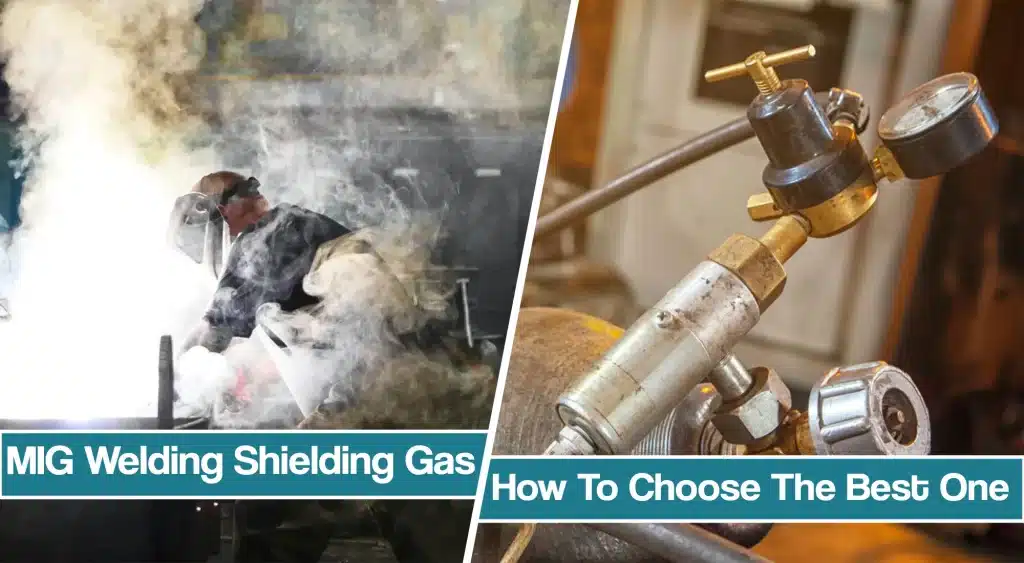
In this article, we’ll explore the best shielding gas for MIG welding and delve into its performances including penetration, weld fluidity and stability, cost, welding speed, weld appearance, and more, to help you make an informed decision for your welding needs.
Why Are Shielding Gases Essential In MIG Welding?
Shielding gas is a crucial component in MIG (Metal Inert Gas) welding as it plays a vital role in protecting the weld pool and electrode from atmospheric contamination. When MIG welding, a consumable electrode wire is continuously fed into the weld pool, which melts and joins the workpieces.
The high temperatures involved in the welding process create a molten weld pool that is vulnerable to oxidation and contamination from the air. The presence of contaminants such as oxygen, nitrogen, and water vapor can cause defects in the welds, resulting in poor quality and weakened joints.
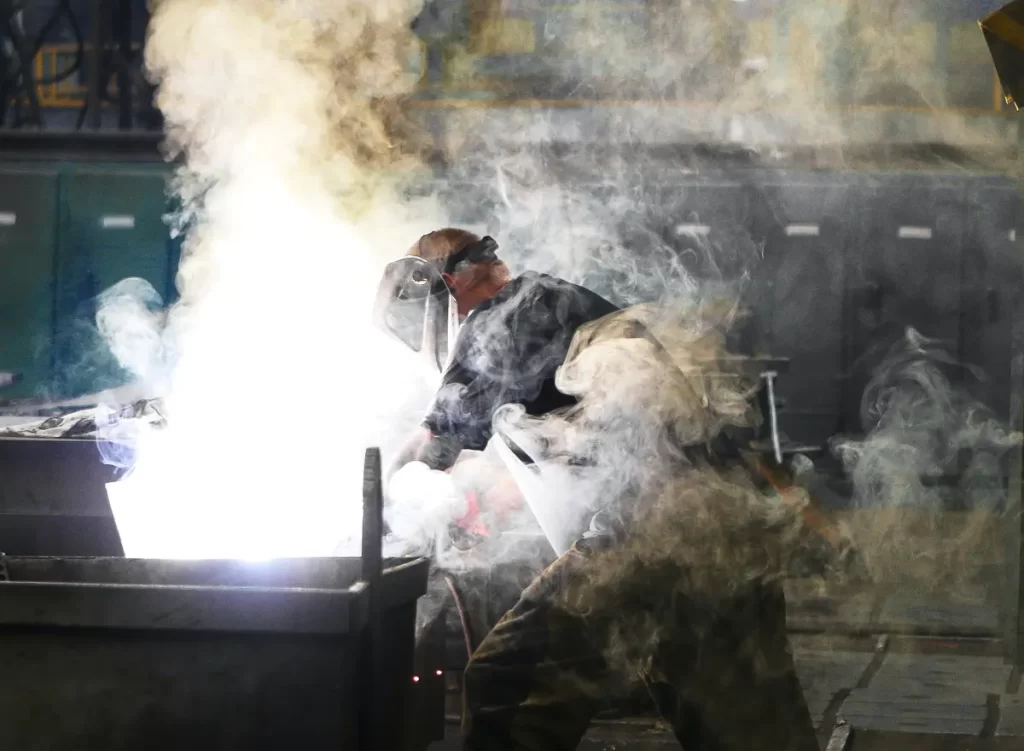
A proper shielding gas, such as argon or a mixture of argon and carbon dioxide, is used to create an inert atmosphere around the weld pool. This prevents the formation of oxides and other contaminants that could weaken the welds.
Additionally, the shielding gas can affect the welding process’s stability, arc quality, penetration, and bead appearance. Therefore, selecting the right shielding gas is crucial in achieving high-quality welds that meet the desired specifications.
Inert Gases In MIG Welding
Inert gases are a group of elements and common shielding gases used by the MIG welder that are characterized by their low chemical reactivity and inability to form stable compounds with other elements. These gases include argon, helium, neon, krypton, and xenon. In MIG welding, argon is the most commonly used inert gas for shielding.
The properties and characteristics of inert gases make them ideal for use in MIG welding. They are non-flammable, non-toxic, and do not react with the molten weld pool. In addition, they are heavier than air, which allows them to displace air and create a protective atmosphere around the weld pool. The use of inert gases in MIG welding helps to prevent oxidation, porosity, and other defects in the welds, resulting in high-quality and strong weld joints.
Argon in MIG Welding
Argon is the most commonly used inert gas used with MIG welders due to its unique properties, which make it ideal for the process. Its primary role is to protect the molten weld pool from the surrounding atmosphere, which can cause contamination and defects in the weld. It can be used for both MIG and TIG welding.
Argon gas has a high ionization potential, which means it requires a higher voltage to ionize and create an arc compared to other gases. This property allows for a more stable arc, resulting in better control of the welding process, consistent penetration, and reduced spatter.
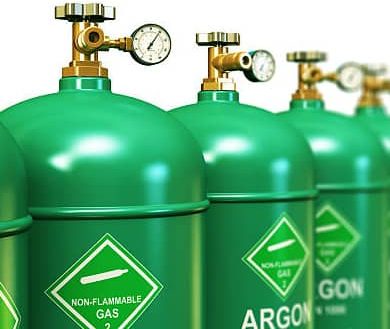
Argon also affects the quality of the weld. By creating an inert atmosphere around the weld pool, argon prevents the formation of oxides, which can weaken the weld. This leads to a higher quality and stronger weld joint. In addition, argon’s thermal conductivity helps to dissipate heat from the weld pool quickly, reducing the risk of warping or distortion.
The penetration of the weld also depends on the type of shielding gas used. Argon has a low ionization potential, which means it doesn’t penetrate as deeply as other gases such as carbon dioxide. However, it still provides sufficient penetration for most welding applications.
For thicker materials, a mixture of argon and carbon dioxide can be used to increase penetration. Argon produces a smooth and consistent bead appearance due to its stable arc and ability to prevent spatter, leading to high weld quality. This results in a cleaner and more aesthetically pleasing finished weld.
Helium In MIG Welding
While argon is the most commonly used shielding gas in MIG welding, helium is also an option for specific applications. Helium is a lighter gas than argon, and its low atomic weight means it ionizes more easily. As a result, helium can provide a more intense arc than argon, leading to deep weld penetration and faster welding speeds of your MIG welder.
The advantages of using helium as a shielding gas in MIG welding include its ability to provide deeper penetration, faster welding speeds, and a narrower weld bead. Helium is also readily available and easy to use. However, it does have some drawbacks. Helium is more expensive than argon and can cause more spatter and distortion if not used correctly. It’s also not suitable for all welding applications, specifically when welding thinner metal gauges, and is typically used for specialized applications such as welding aluminum.
Semi-reactive and reactive gases in MIG welding
Semi-reactive and reactive gases are another type of shielding gas used with MIG welders. Unlike inert gases like argon and helium, these gases contain reactive components that interact with the metal being welded, affecting the welding performance. They also react with tungsten electrode, so they shouldn’t be used in TIG welding.
Semi-reactive gases, such as carbon dioxide (CO2) and argon-carbon dioxide blends, provide a combination of benefits from both inert and reactive gases. These gases provide a stable arc and improve penetration compared to pure argon, while also allowing for some chemical reaction with the metal being welded. The resulting chemical reaction can help clean the surface of the metal, removing oxides and other impurities, which can lead to stronger welds.
CO2 in MIG welding
Carbon dioxide (CO2) is a commonly used semi-reactive welding gas with MIG welders. It is readily available and cost-effective, making it a popular choice for industrial applications. It can be mixed with different shielding gases, but many also use pure carbon dioxide with a MIG welder when the job needs to be done quickly and cheaply.
In MIG welding, CO2 provides a stable arc and improves penetration compared to pure inert gases such as argon.
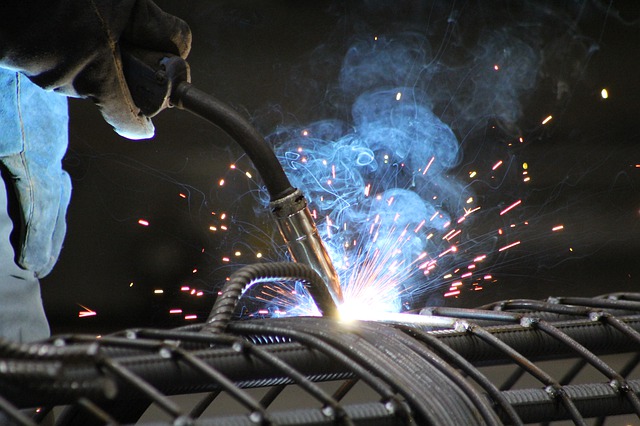
This is because CO2 is a semi-reactive gas, which means it allows for some chemical reaction with the metal being welded. The resulting chemical reaction can help clean the surface of the metal, removing oxides and other impurities, and leading to stronger welds. Additionally, the use of CO2 can help reduce the risk of undercutting, which is a common problem in MIG welding where the weld metal melts away the base metal.
One of the major advantages of CO2 is its ability to be used for welding thicker materials. It provides good penetration and can help create strong welds on materials with greater thickness. However, CO2 can also cause more spatter compared to pure inert gases, and it requires a higher voltage for stable arc performance. This can make it more difficult to achieve a smooth bead appearance.
O2 And N2 With MIG Welders?
The use of reactive gases such as O2 and N2 in MIG welding requires careful control of the welding process to prevent excessive oxidation or porosity but can lead to stronger and cleaner welds when used properly. Oxygen can be used in small amounts as an additive to other gases, such as argon or CO2, to improve penetration, clean the surface of the metal being welded, and promote the spray transfer process which provides high welding speeds.
However, excessive use of oxygen can cause excessive oxidation, leading to weaker welds. Nitrogen is often used in combination with other gases as it can help stabilize the arc and provide good penetration.
Shielding Gas Mixtures In MIG Welding
The most popular gas mixtures used in MIG welding are blends of argon, CO2, and helium, with different proportions depending on the welding application. One common mixture is 75% argon and 25% CO2, which provides good penetration and a stable arc while also reducing spatter. This mixture is often used for welding mild steel.
Another popular mixture is 90% helium and 7.5% argon, with a small amount of CO2 added. This gas blend is suitable for welding aluminum and provides good heat transfer and penetration. A third common mixture is 98% argon and 2% oxygen, which provides good penetration and can help clean the surface of the metal being welded. This blend is often used for welding stainless steel.
75% Argon/25% CO2, or C25 Mixture
The 75% argon and 25% CO2 shielding gas mixture is one of the most popular gas blends used in MIG welding. This mixture is preferred when you want to weld mild steel or carbon steel due to its ability to provide good penetration, a stable arc, and reduced spatter.
Argon is an inert gas that provides a stable arc and helps to protect the weld puddle from contaminants in the air.
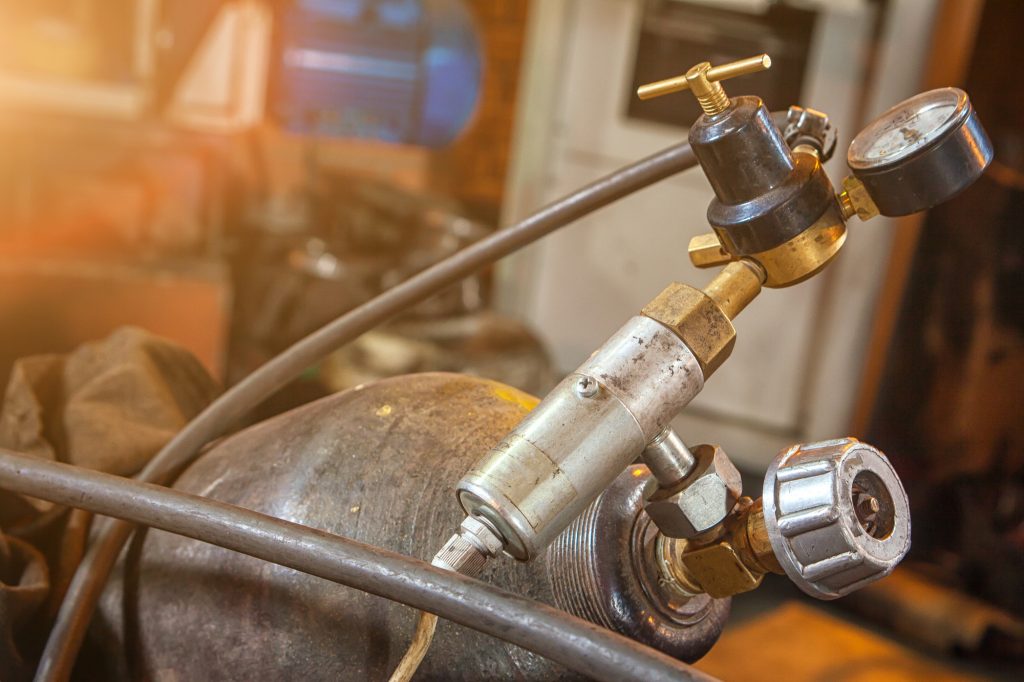
CO2 is a semi-reactive gas that can help to clean the surface of the metal being welded, leading to stronger welds. The combination of these gases provides a balance between stability and cleaning action, resulting in a high-quality weld.
75% argon and 25% CO2 mixture can help to reduce spatter during the welding process. The gas blend provides good penetration and can help to create strong welds on materials with greater thickness. However, since this mixture has an addition of semi-reactive gas such as CO2, it cannot be used to weld delicate or non-ferrous metals such as aluminum, magnesium, or nickel.
98% Argon/2% Oxygen in MIG Welding
The 98% argon and 2% oxygen gas mixture is commonly used in MIG welding for welding various stainless steels. This gas blend provides good penetration and can help to clean the surface of the metal being welded.
Argon is an inert gas that helps to protect the weld from atmospheric contamination and provides a stable arc. The addition of oxygen to the gas mixture helps to promote oxide formation, which can help to clean the surface of the metal and improve the quality of the weld. Additionally, the oxygen in the mixture can help to increase the heat input and improve penetration.
The 98% argon and 2% oxygen mixture is often used in welding applications where a high-quality, clean weld is required, such as in the food and beverage industry or in medical equipment manufacturing. This gas blend can also be used for welding other materials such as titanium, nickel alloys, and aluminum.
However, there are some drawbacks to using this gas mixture. The addition of oxygen to the gas blend can increase the risk of oxidation and lead to weaker welds if not used properly. Additionally, the increased heat input from the oxygen can cause distortion in the metal being welded.
90% Helium/7.5% Argon/2.5% Oxygen In MIG Welding
The tri-gas mixture of helium, argon, and CO2 is a popular choice for MIG welding applications where high heat input and deep penetration are required. The combination of these gases provides several benefits and improved welding performance compared to using a single gas.
The addition of helium to the gas mixture increases the heat input and improves penetration. This is especially beneficial for welding thicker materials or when a deeper weld is required. The argon in the gas mixture provides stability to the arc and helps to protect the weld from contamination.
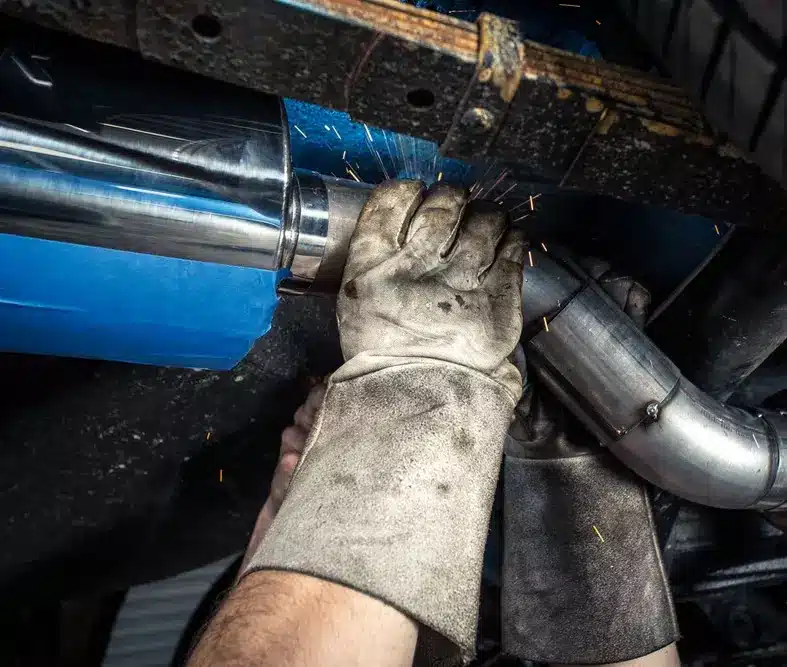
CO2 in the gas mixture helps to increase the heat input and promote better penetration. The main drawback of using a tri-gas mixture of helium, argon, and CO2 is the increased cost compared to using a single gas. The use of a tri-gas mixture may not be necessary or beneficial for all welding applications, and it is often reserved for stainless steel.
What Is The Best Shielding Gas For MIG Welding Mild Steel?
The best shielding gas for mild steel welding with GMAW is, without a doubt, a mixture of 75% Argon and 25% CO2 – a C25 mixture. this mixture brings out the advantages of both gases – good penetration and shielding gas coverage, reliable arc starts and stability, weld fluidity, and low amounts of spatter.
It can be used on various metal thicknesses, it allows spray transfer, overall costs are lower compared to Argon/Helium mixture, and you get the desired mechanical properties, with high production and good-looking weld bead.
What Is The Best Shielding Gas For MIG Welding Aluminum?
If you decide to MIG weld aluminum, The best shielding gas for your welder is pure argon. Aluminum has a high thermal conductivity and a low melting point, which makes it susceptible to warping and burn-through during the welding process.
Using pure argon as the shielding gas helps to provide a stable arc and prevent atmospheric contamination during the welding process, which can lead to poor-quality welds.
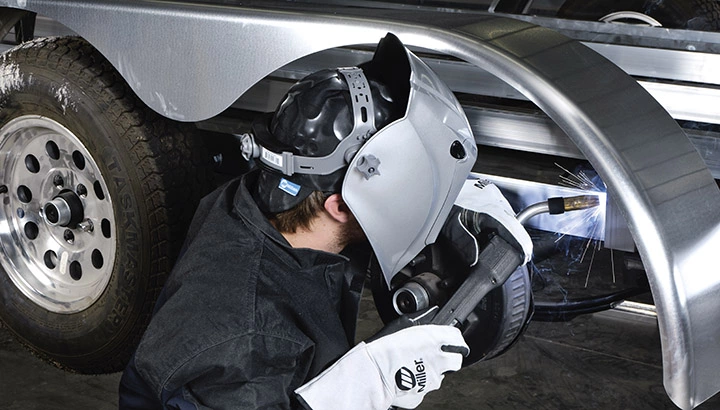
When using pure argon as the shielding gas for MIG welding aluminum, it is important to use a higher voltage setting and a slower wire feed speed than when welding other materials. This allows for deeper penetration and better fusion of the material, resulting in a stronger and higher quality weld.
In some cases, a mixture of argon and helium may be used for MIG welding aluminum. This combination provides a higher heat input and deeper penetration, which can be beneficial for welding thicker materials.
What Is The Best Shielding Gas For Stainless Steel?
The best shielding gas for MIG welding stainless steel is a mixture of 98% argon and 2% carbon dioxide (CO2). This mixture is often referred to as C2 gas or 98/2 gas.
Using this gas mixture provides several benefits for MIG welding stainless steel. The CO2 content in the mixture provides a higher level of ionization in the arc, which helps to improve arc stability and reduce spatter during the welding process. This results in a higher-quality weld with a better bead appearance. Helium-90%,
The mixture of Argon-7.5%, and CO2-2.5% is widely used for short arc welding of stainless steel in all positions. The CO2 content is kept low to minimize carbon pickup and assure good corrosion resistance, especially in multi-pass welds.
Conclusion
Selecting the appropriate shielding gas for MIG welding is crucial to achieving high-quality and efficient welding results. The shielding gas selection depends on the specific welding application, the type of material being welded, and the desired welding outcomes.
When selecting a shielding gas, it is important to consider the gas’s properties, such as its ionization potential, thermal conductivity, and ability to prevent atmospheric contamination. It is also important to ensure that the correct gas mixture is compatible with the welding equipment and process.
Resources
- https://www.millerwelds.com/resources/article-library/what-gas-should-you-use-for-mig-welding-in-diy-applications
- https://americantorchtip.com/blog/the-fundamentals-of-mig-welding-gases/
- https://www.tregaskiss.com/mig-welding-shielding-gas-basics/
- http://www.advancedweldingsupply.com/gas%20guide.html
- https://weldingsupplystore.com/argon-helium-carbon-dioxide-mix/
- https://unimig.com.au/which-gas-do-you-need-for-your-mig-weld/





